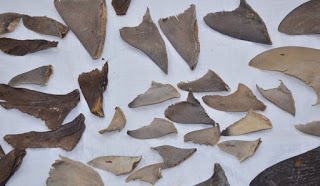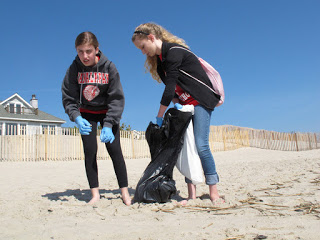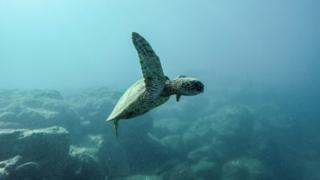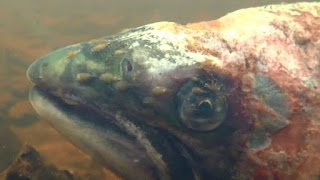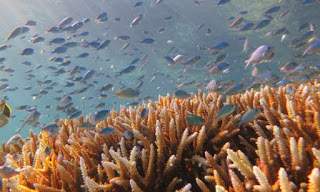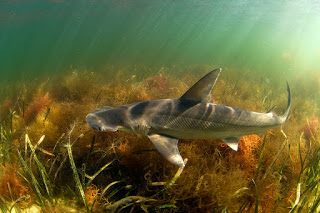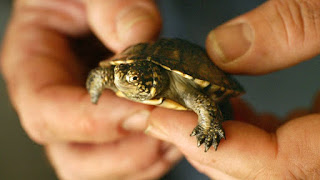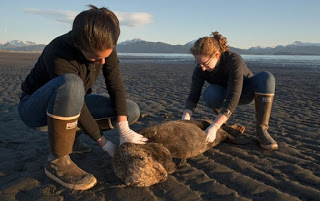Sea Save Foundation “Ocean Week in Review” September 7, 2018: We Gather News; You Stay Informed
1. 8,000 Kg Of Shark Fins Bound For China Seized In Mumbai
MUMBAI – The Directorate of Revenue Intelligence (DRI) on Monday said it seized 8,000 kgs of shark fins from Mumbai and Gujarat meant for export to China and Hong Kong. The seized shark fins were meant for illicit export by misdeclaring them as dried ray skins, dried marine products and fish maw, among others, a DRI statement said. Export of shark fins of all shark species is prohibited under the law.
———————————————–
2. Pope Urges Action Against ‘Endless Fields’ of Plastic in Oceans
VATICAN CITY – Pope Francis, who has spoken strongly for action against global warming in recent years, called on Saturday for people to work together to stop the world’s oceans filling up with plastic waste. “We cannot allow our seas and oceans to be littered by endless fields of floating plastic,” the pope said. “We need to pray as if everything depended on God’s providence, and work as if everything depended on us.”
———————————————–
3. Scientists Developing Way of Using Waste Plastic to Create Car Fuel
Discarded plastic could be used to fuel cars in the future thanks to a ground-breaking process developed by scientists from Swansea University. They have been able to transform unwanted plastic into hydrogen which in turn could be used to run cars. Dr. Moritz Kuehnel, of the University’s chemistry department, told the BBC how light-absorbing material are added to the plastic, before it is placed in an alkaline solution and then exposed to sunlight, which creates hydrogen.
———————————————–
4. Cigarette Butts Leading Cause of Ocean Garbage
Cigarette butts are among the most abundant types of human-produced garbage in the world’s oceans. Most of the roughly 5.5 trillion cigarettes manufactured globally every year contain a plastic-based filter, made of cellulose acetate, according to the Cigarette Butt Pollution Project. Those filters can take decades to decompose after the cigarette butt has been discarded. As the plastics break down the chemicals can be consumed by wildlife.
———————————————–
5. UN Treaty Would Protect High Seas From Over-Exploitation
The first significant steps towards legally protecting the high seas are to take place at the UN in New York. These waters, defined as the open ocean far from coastlines, are threatened by deep-sea mining, over-fishing and the patenting of marine genetic resources. Over the next two years, government representatives aim to hammer out a binding agreement to protect them against over-exploitation. But several nations, including the US, are lukewarm towards the proposals.
———————————————–
6. Campaigners Claim Fish Farms are to Blame for Wild Salmon Deaths
Campaigners claim wild salmon returning to a river in the Isle of Lewis are infested with sea lice originating from local fish farms. Salmon and Trout Conservation Scotland said wild fish have been found dead or dying at the mouth of the Blackwater river at Loch Roag. The group has alleged the Scottish Salmon Company’s seven fish farms in the sea loch were to blame. The company said it took fish health and welfare “very seriously”.
———————————————–
7. NASA Discovers Bubbling Lakes in the Remote Arctic – A Sign Of Global Warming
NASA has released videos of bubbling lakes in the remote Arctic tundra, where warming continues to release greenhouse gases into the atmosphere at unprecedented rates. The international research team, funded by NASA as part of their Arctic-Boreal Vulnerability Experiment (ABoVE), recently published their results in Nature Communications. What they found are bubbling lakes as greenhouse gases are released from the previously frozen ground, leading to increased greenhouse gas emissions and a warming positive feedback.
———————————————–
8. Scientists Calculated a ‘Point of No Return’ for Dealing with Climate Change — and Time is Running Out
 There’s nothing mysterious about what it will take to limit climate change: The world needs to transition away from fossil fuels towards renewable energy. But the timing of that transition is extremely important. According to a new study published in the journal Earth System Dynamics, we could soon cross a point of no return. After that, it’ll be almost impossible to keep Earth’s temperature from rising 2 degrees Celsius.
There’s nothing mysterious about what it will take to limit climate change: The world needs to transition away from fossil fuels towards renewable energy. But the timing of that transition is extremely important. According to a new study published in the journal Earth System Dynamics, we could soon cross a point of no return. After that, it’ll be almost impossible to keep Earth’s temperature from rising 2 degrees Celsius.———————————————–
9. Robot Drone Could Protect Great Barrier Reef by Killing Invasive Species and Monitoring Quality
An underwater drone that can keep watch over the Great Barrier Reef’s health and kill invading species is ready to be put to the test. Researchers from Queensland University of Technology say their robot reef protector can monitor coral bleaching, water quality, pest species, pollution and sediment buildup. It has also been trained to detect crown-of-thorns starfish with 99% accuracy and can inject the coral-eating starfish with vinegar or bile salts, both deadly to the invasive predator.
———————————————–
10. Study Says Coral Bleaching on the Great Barrier Reef Not Limited to Shallow Depths
A new study demonstrates that the recent mass coral bleaching on the Great Barrier Reef was not restricted to shallow depths, but also affected deep reefs. Although deep reefs are often considered a refuge from thermal anomalies, the new research highlights limitations to this role and argues that both shallow and deep reefs are under threat of mass bleaching events. Published today in the journal Nature Communications, the study focuses on the mass bleaching event in 2016 that caused the death of 30% of shallow-water corals on the Great Barrier Reef. It details how the impacts of this bleaching lessened over depth, but were still substantial on deep reefs.
or
———————————————–
11. We’ve Discovered a Shark That Eats Plants as a Side Dish to Shellfish
The bonnethead shark, a relative of the hammerhead, absorbs nutrients from the seagrass it eats, making it the first known omnivorous shark. Biologists had previously noticed that bonnetheads consume copious amounts of seagrass in addition to crustaceans and other shellfish. But because the bonnethead’s digestive system looks almost identical to other meat-eating sharks – and so seems to be best suited to deal with a high protein diet – scientists always assumed the seagrass ingestion was accidental. To better understand these sharks’ diet, Samantha Leigh at University of California Irvine and her colleagues …
———————————————–
12. Trump Adds Physicist Will Happer, Climate Science Critic, to White House Staff
 William Happer, a physics professor and vocal critic of mainstream climate science, has joined the White House as a top adviser. Happer, 79, told E&E News in an email that he began serving yesterday on the National Security Council as the senior director for emerging technologies. NSC officials confirmed Happer’s new role but declined to provide further detail about the appointment, which CNN first reported.
William Happer, a physics professor and vocal critic of mainstream climate science, has joined the White House as a top adviser. Happer, 79, told E&E News in an email that he began serving yesterday on the National Security Council as the senior director for emerging technologies. NSC officials confirmed Happer’s new role but declined to provide further detail about the appointment, which CNN first reported.———————————————–
13. Wildlife Advocates Fear Trump Administration is De-Clawing Endangered Species Act
Currently, species listed as “threatened” via the ESA — such as the murrelet and the pond turtle — are granted the same safeguards as those that are considered “endangered.” The Trump administration has signaled it wants to prohibit that practice. It also would like to loosen regulations so that the economic impact of species protection could be a factor.
———————————————–
14. California Water Wars Would Get Crazy Complicated if Trump Administration Dives In
Anyone who has spent much time in California knows that our water policies and politics are immensely complicated and contentious. Now the Trump administration wants to muck up the water wars even more. The Bureau of Reclamation told state officials on Aug. 17 that it wants to renegotiate the landmark 1986 agreement for the sprawling federal and state water projects and how they pump water through the Sacramento-San Joaquin Delta. The goal is to get more water to Central Valley farmers, at the expense of millions of Southern California residents, The Sacramento Bee’s Dale Kasler reports.
———————————————–
15. Climate Change Has Doubled the Frequency of Ocean Heat Waves
Ocean heatwaves will become more frequent and extreme as the climate warms, scientists report on August 15 in Nature. These episodes of intense heat could disrupt marine food webs and reshape biodiversity in the world’s oceans. Scientists analyzed satellite-based measurements of sea surface temperature from 1982 to 2016 and found that the frequency of marine heatwaves had doubled. These extreme heat events in the ocean’s surface waters can last from days to months and can occur across thousands of kilometers.
———————————————–
16. Irish Naval Service Detains Vessel Shark Fins on Board

A Spanish-registered fishing vessel detained by the Naval Service off the southwest coast has been found to have more than a tonne of shark fins on board.
Up to 5,000 sharks are estimated to have been caught and stored on the vessel before it was boarded last week by an inspection team from the LÉ William Butler Yeats, 150 nautical miles south of Mizen Head.
———————————————–
Be sure to “LIKE” http://facebook.com/SeaSave to ensure our “Week in Review” is delivered to your newsfeed every Friday.
Sea Save Foundation is committed to raising awareness of marine conservation. The Week in Review is a team effort produced by the Sea Save staff to provide a weekly summary of the latest in marine research, policy, and news.

